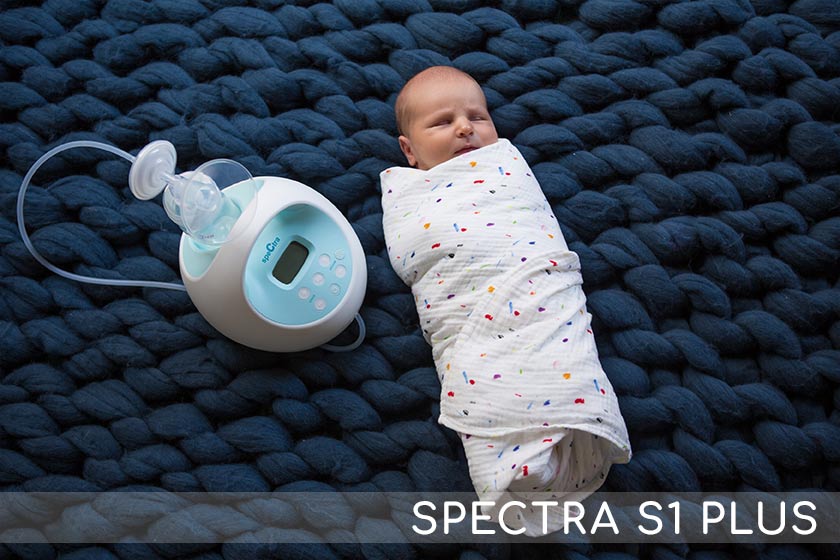The American Academy of Pediatrics (AAP) Issues Updated Breastfeeding Guidelines
By Melissa Portunato MPH, IBCLC, RLC
On June 27, 2022, The American Academy of Pediatrics updated its existing policy statement on breastfeeding. The revision has come at a controversial time amidst the current formula crisis, failed legislation, and the recent Supreme Court ruling on reproductive health rights. Read on for the full breakdown and what this means for public health in the US.
What’s NEW?
The previous AAP policy recommended breastfeeding for the infant’s first year and has now been updated to 2 years and beyond. The policy now states,
“ The AAP supports continued breastfeeding, along with appropriate complementary foods introduced at about 6 months, as long as mutually desired by mother and child for 2 years or beyond.”
This wasn’t the only change that came with the revised policy. Social and cultural calls for action were also at the center of the guideline revisions to support parents who want to meet the new recommendation. The official statement includes the need for paid maternity leave and more support in public, child care, and workplace facilities. In addition, maternity care practices were urged to improve breastfeeding initiation, duration, and exclusivity. The organization also acknowledges that babies born to gender-diverse families may not have equal access to human milk, and clinical support may be more challenging. Overall, the AAP calls for clinicians to equip themselves to provide evidence-based quality medical care to ensure all families best meet their personalized breastfeeding goals.
Why Now?
As the formula crisis rages on, parents may be asking themselves, why now? The truth is this has been a long time coming, but the formula shortages did help to revive the conversation. Significant research has long backed up the nutritional and immunological benefits of human milk feeding past one year. The extensive studies are not limited to the above benefits; instead, they reveal psychological advantages when the young child continues to nurse directly at the breast and boast benefits for the mother as well. It’s important to note that the new revision is now in line with the World Health Organization’s long-standing breastfeeding recommendations for 2 years or beyond.
Now What?
We all know exclusive breastfeeding is the goal, but that can seem far-fetched or unattainable for families struggling to make enough milk, experiencing latching difficulties, or simply lacking breastfeeding education or support. Nevertheless, many experts still agree the revision to the AAP policy is a step in the right direction. It will likely prompt the availability of more community resources for pre/post-natal education, diversity of lactation clinicians, and easier access to low-cost breastfeeding support platforms, i.e., telehealth.
Unfortunately, the Pump For Nursing Mothers Act which would extend breastfeeding mothers pumping rights to 2 years, was denied in the wake of the AAP’s updated guidelines. The failed legislation covered salaried breastfeeding individuals that were not covered under the Affordable Care Act. Another bill already introduced to the Senate, the Pregnant Workers Fairness Act, prohibits employers from discriminating based on pregnancy, childbirth, and related medical conditions. This bill appears ready to pass soon and is set to protect working breastfeeding families similarly. Good news!
How can Spectra Help?
Breastfeeding for 2 years or beyond may not be realistic for all families, yet there are ways Spectra baby USA is making it easier for parents that decide to breastfeed past one year. All Spectra Baby USA’s high-quality electric breast pumps have a 2-year product warranty. Complimentary virtual consultations with a Certified Lactation Consultant (IBCLC) are available with the purchase of any Spectra baby USA breast pump. No matter the amount of breastmilk you can provide or the length of time, breastfeeding is an accomplishment, and human milk provides irreplaceable health benefits to your baby. If you have questions about achieving your breastfeeding goals, message us at ibclc@spectrababyusa. In addition, we always recommend connecting with your local International Board Certified Lactation Consultant for evidence-based advice and community support.
Sources:
American Academy of Pediatrics calls for more support for breastfeeding mothers within updated policy recommendations. Home. (n.d.). Retrieved July 5, 2022, from https://www.aap.org/en/news-room/news-releases/aap/2022/american-academy-of-pediatrics-calls-for-more-support-for-breastfeeding-mothers-within-updated-policy-recommendations/
Text – H.R.3110 – 117th Congress (2021-2022): Pump for Nursing Mothers act. (n.d.). Retrieved July 5, 2022, from https://www.congress.gov/bill/117th-congress/house-bill/3110/text
Bonyata, K. (2018, January 15). Breastfeeding your toddler: What to expect • kellymom.com. KellyMom.com. Retrieved July 5, 2022, from https://kellymom.com/ages/older-infant/toddlernursing/



